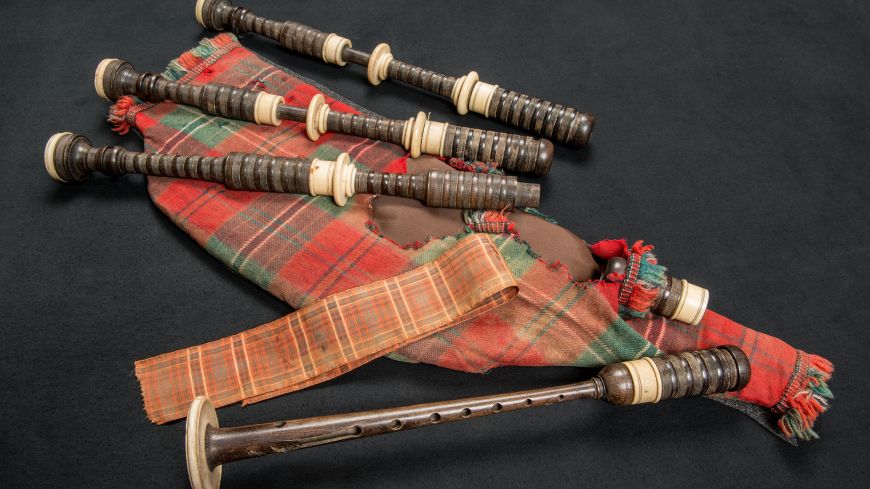
With the Commonwealth Games due to open in Glasgow on Wednesday, 23 July and the Centenary of the start of the First World War this year, the timing of this exhibition could not be better. This is a fascinating small exhibition which highlights the very close links that there are between Scotland and the Commonwealth - at that time the British Empire.
'Common Cause' illustrates the many family ties of Scottish emigrants, so that when the world was preparing for war in 1914 many men of Scottish birth joined the armed forces of Canada, Australia, New Zealand and South Africa. The same happened here in Great Britain where many Scots joined the local Scottish volunteer battalions.
The wide range of links and supporters, some of whom have loaned exhibits reads rather like a roll call of former Scottish Regiments - the 48th Highlanders of Canada, the Canadian Scottish (Princess Mary's), the Black Watch of Canada, the Seaforth Highlanders of Canada and many, many more too numerous to mention.
One fascinating exhibit is the New Zealand Cross which was an award created because it was believed that 'colonial' forces could not be awarded the Victoria Cross. The one on display was won by Cornet Angus Smith who had previous service with the 93rd Highlanders.
Throughout the exhibition there is, together with the sense of military tradition, an affinity with the customs of the homeland - Scotland.
There is a splendid wall sized picture of the 48th Highlanders of Canada with seven more smaller photographs illustrating the Canadian/Scottish links, together with photographs of the Dunedin, Wellington, Wanganui and Canterbury Highland Rifles of New Zealand.
Beside these is a painting of Piper James Richardson, VC, of the 16th (Canadian Scottish) Battalion at Regina Trench where he won his award - just a pity that the citation was not given beside the picture as it would make fascinating reading and would bring the story to life.
Richardson was born in Bellshill, Lanarkshire, and emigrated to Canada in 1913 going to Vancouver where he joined the local Scots volunteer Regiment. In the Somme battle he was helping to evacuate comrades under fire and left his pipes in no-man's land; he was last seen heading out to retrieve his precious pipes. His pipes were retrieved after the battle and are here on display.
Even if this is a short visit, I do recommend that you watch the film showing the involvement of Commonwealth and Anglo-Scots in the Great War. The 'periscope rifle sights' invented by the Anzac to stop the casualties being inflicted by German snipers - a drumhead service at Deville Wood in 1918 with an investiture and pictures of South African nurses - the Tyneside Scots (Harder than Hammers!) - the London Scottish digging trenches in Arras with many wearing their kilts. This is well worth watching as it is a piece of real history.
Other items to catch the eye were the bronze by Wallace Anderson, created in 1933 of the 'Defence of Anzac' and the South African Springbok 'Nancy' which was the mascot of the 4th South African Infantry Battalion (South African Scottish) from 1915-1918. Her misshapen horn was the result of a bombardment which obviously affected her as the horn afterwards grew out of shape. As a mascot she was kept behind the front line at Deville Wood but nevertheless came under artillery fire.
At the end of the war many left to find jobs and start a new life in other countries, particularly Canada. There is a model of RMS Aquititanic which was built for Cunard in Clydebank and a photograph of immigrants in 1925 and heading for jobs in Canada.
The book about the exhibition and the exhibits on loan, 'Common Cause' is by Stuart Allan and David Forsyth and at £14:99 has a lot of detail which would be a benefit - and a grand memento - for any visitor. This exhibition is well worth a visit - and get the book!
Exhibition continues until 12 October, daily 10am-5pm. Entrance is free.

